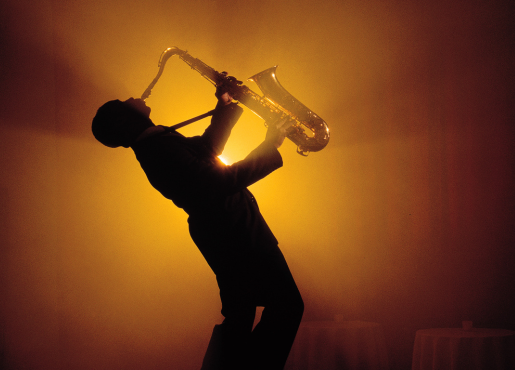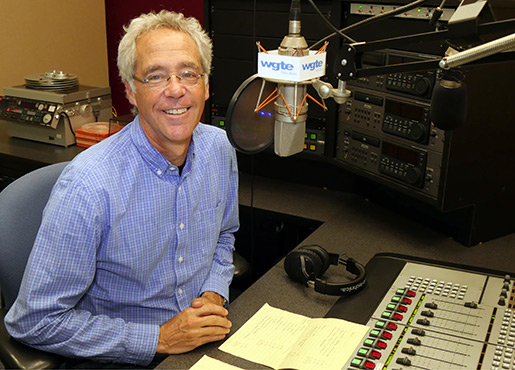
This Week on Jazz Spectrum – The Spirit of Live Recordings
By Fritz Byers
At its core, jazz is an improvisational music. I believe I read about fifty years ago that the projectivist poet Charles Olson said something to the effect that if you say the same thing twice, you’ve lied. If it wasn’t Charles, it was someone else loosely associated with Black Mountain and the scores of innovative artists inspired by that short-lived college.

Regardless, the saying and its inviting challenge has stuck with me, and it has always seemed to be a mantra particularly suited to the dynamics of making jazz. Studio recordings of jazz are a sort of paradox, capturing and giving a fixed permanence to a single expression by artists whose credo is, at bottom, to never say the same thing twice. Of course, only a churl would reject the thousands of studio recordings that define the arc of jazz history and establish the reputations of its musicians. Can you imagine not having Kind of Blue or A Love Supreme or any of Billie Holiday’s studio recordings? Or whatever your favorite is.
On the other hand, the pantheonic saxophonist Sonny Rollins is said to be disappointed with all of his studio recordings, finding that they uniformly fall short of his famously grand ambitions for himself and his art. That’s way too critical, in my view, but if you’ve heard Sonny live, you can understand his perspective – there really isn’t anyone like Sonny Rollins in performance. If you want to verify that, check out his series of Road Show releases, comprising live recordings made over decades and personally selected by Sonny for release.
We’re lucky to have all of the jazz we have on record. But I’ve seen enough live performances over the years to know that being there in person as jazz musicians make it up in real time in the virtuosic high-wire act that defines their craft is invariably breathtaking.
This week, as is often the case, live recordings are sprinkled through the sets of Jazz Spectrum. In set 1, you’ll hear the pianist Lennie Tristano and alto saxophonist Lee Konitz in a fabled 1955 performance at the Confucius Restaurant in New York City. Lennie was a revered teacher, dogmatic and inspiring, and his idiosyncratic views were deeply, if narrowly, influential on a handful of jazz greats, most notably Konitz. Their version of “’S Wonderful” belies the commonplace view that Lennie’s theories made for cold and technical performances. For his over seventy years on the frontlines of the music, Lee never failed to be interesting. His playing here is no exception.
In the second set, halfway into the first hour, we have the pianist Bill Evans, captured in Copenhagen in 1964 on Bill’s first European tour. With the bassist Chuck Israel and Larry Bunker at the drums, the trio works out on the standard, “I Didn’t Know What Time It Was.” As best I can tell, this is the only time Bill was ever recorded playing this tune, which brings a special intrigue to this recently discovered recording. Bill’s recorded output rivals, in its abundance, that of any great pianist, but I hear in this recording an unusual exploratory free-form joy that makes me smile. Chuck had the formidable job of following the irreplaceable Scott LaFaro on bass in Bill’s trios after Scott’s death in 1961 in a car accident. Here, you’ll hear the lively imagination that led Bill to trust Chuck enough to pick him and keep him around.
At the end of the third set, mid-way through the second hour, the altoist Steve Coleman and his spectacular band, Five Elements, are Live at the Village Vanguard, recorded in 2017. Steve’s saxophone is, as always, both lithe and piercing, and you’ll understand why he is a musician’s favorite. Here, he is in the company of the trumpeter Jonathan Finlayson and the word artist Kokayi. This recording, which strikes me as a fusion of jazz and hip-hop sensibilities, sounds so spontaneous, particularly with Kokayi’s contributions, that it’s almost like improvisation operating on some sort of new plane.
And at the end of the third hour, the seventh set wraps up with the nonet of multi-reed great Joe Lovano, recorded in performance in September 2002. The little big band performs an ingenious arrangement of John Coltrane’s composition, “After the Rain.” We know by now that Joe can do anything he sets out to do. Here, working with, among others, fellow tenor saxophonists George Garzone and Ralph Lalama, and the great baritone saxophonist Scott Robinson, Joe leads the nonet in a performance that draws out the moody beauties in Coltrane’s tune. The performance is thoroughly arranged, yet it has a fluid jam-session quality that documents what it was like to be at the Vanguard on that one unique night. In other words, it’s a paradigm of a live recording.
- Home
- Schedules
- TV
- TV
- Local TV Programs
- Business | Life 360 with Kristi K.
- Toledo Stories
- To The Point with Doni Miller
- Listening with Keith Burris
- Ideas & Insights
- WGTE Presents
- BL360: Northwest Ohio Innovation Consortium
- Magic of the Old West End
- Freedom Means Never Surrender
- I&I: The Random Factor
- FF: National Cherry Festival
- TTP: Moms Demand Action For Gun Sense in America
- Watch Live
- Radio
- Education
- Community
- Support
- About
- Donate
- Watch Live



